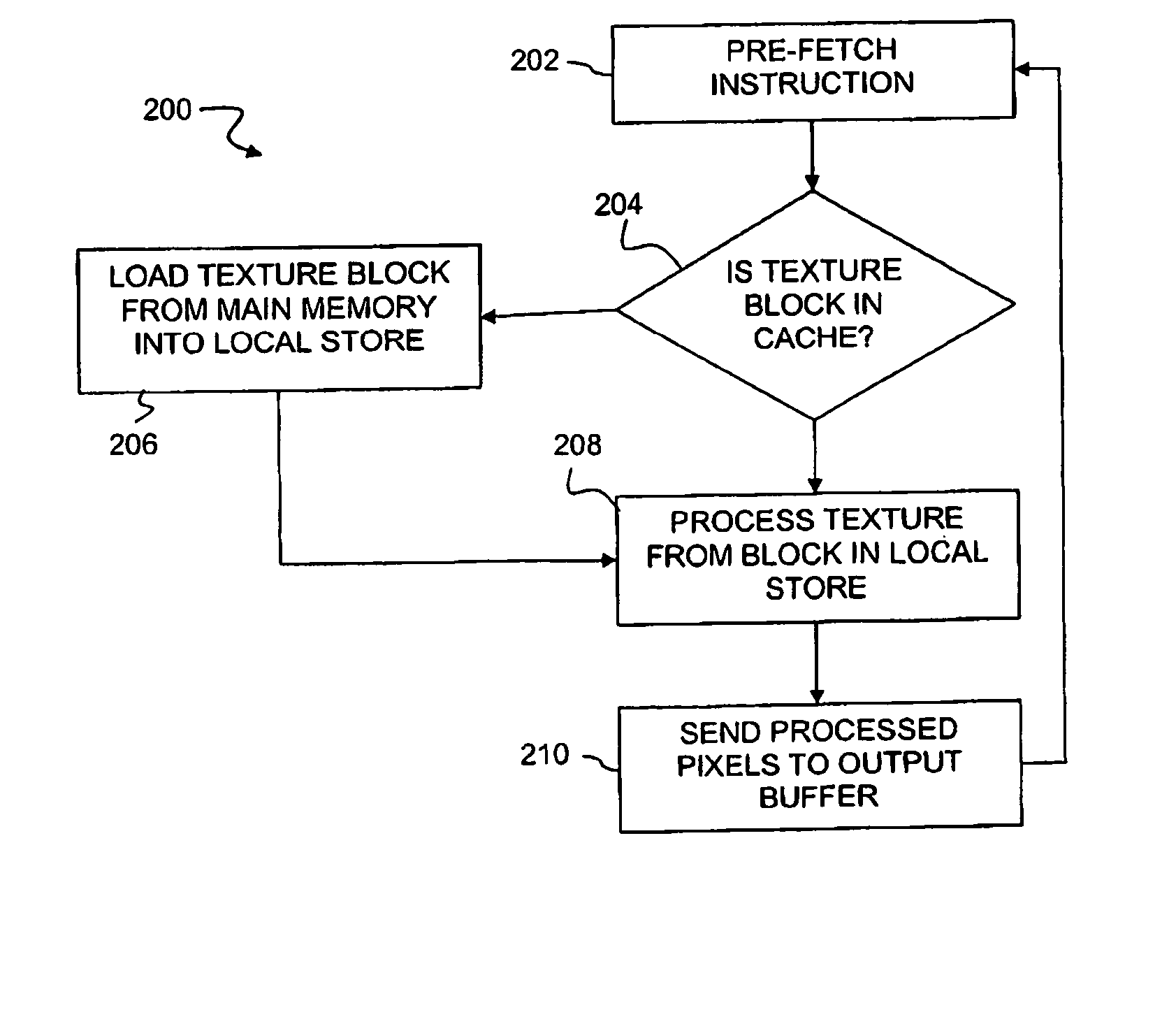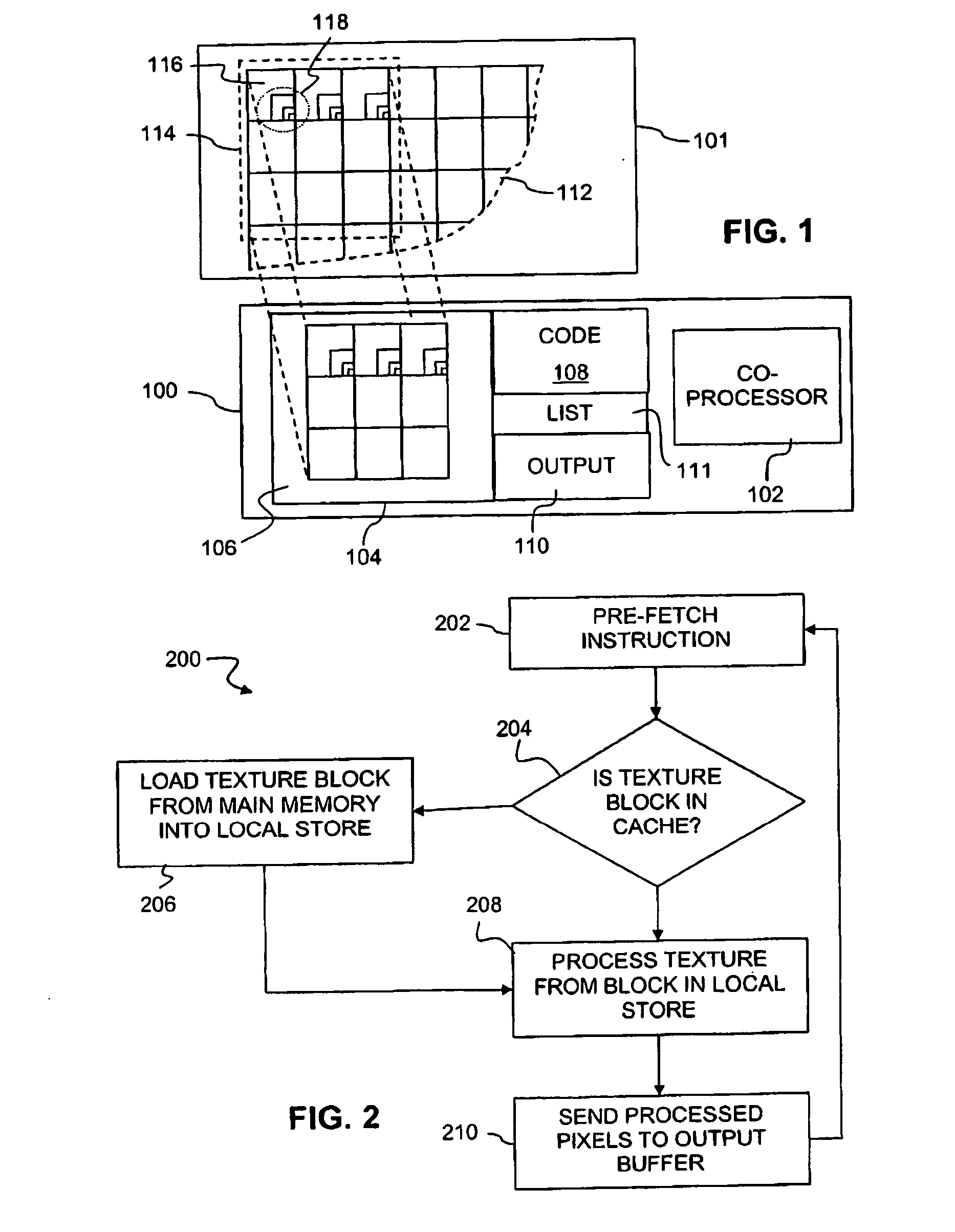Texture unit for multi processor environment
a multi-processor environment and texture technology, applied in the field of computer graphics, can solve the problems of slow clock rate of typical graphics processors, limited memory space of cell processors, and large texture maps
- Summary
- Abstract
- Description
- Claims
- Application Information
AI Technical Summary
Benefits of technology
Problems solved by technology
Method used
Image
Examples
Embodiment Construction
[0021] Although the following detailed description contains many specific details for the purposes of illustration, anyone of ordinary skill in the art will appreciate that many variations and alterations to the following details are within the scope of the invention. Accordingly, the exemplary embodiments of the invention described below are set forth without any loss of generality to, and without imposing limitations upon, the claimed invention.
[0022] Embodiments of the present invention allow parallel processors, such as cell processors to produce graphics without the use of specialized graphics hardware. According to an embodiment of the present invention, a texture unit fetches and blends image pixels from various levels of detail of a texture called mipmaps and returns the resultant value for a target pixel in an image. The texture unit is an approach to retrieving filtered texture data that may be implemented entirely in software. The texture unit utilizes no specialized har...
PUM
 Login to View More
Login to View More Abstract
Description
Claims
Application Information
 Login to View More
Login to View More - R&D
- Intellectual Property
- Life Sciences
- Materials
- Tech Scout
- Unparalleled Data Quality
- Higher Quality Content
- 60% Fewer Hallucinations
Browse by: Latest US Patents, China's latest patents, Technical Efficacy Thesaurus, Application Domain, Technology Topic, Popular Technical Reports.
© 2025 PatSnap. All rights reserved.Legal|Privacy policy|Modern Slavery Act Transparency Statement|Sitemap|About US| Contact US: help@patsnap.com



